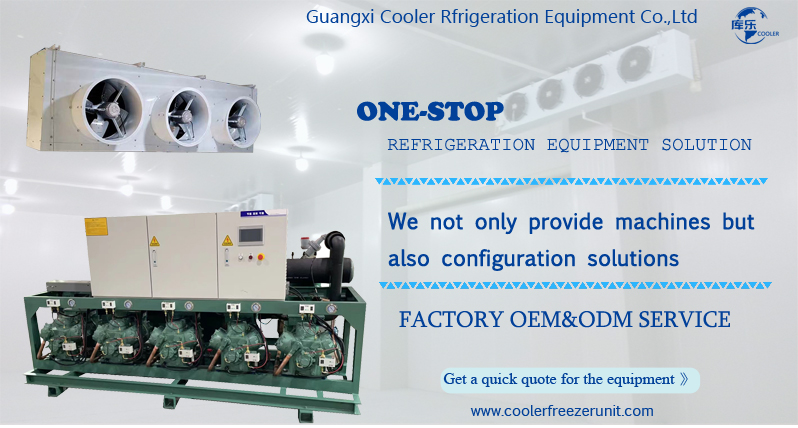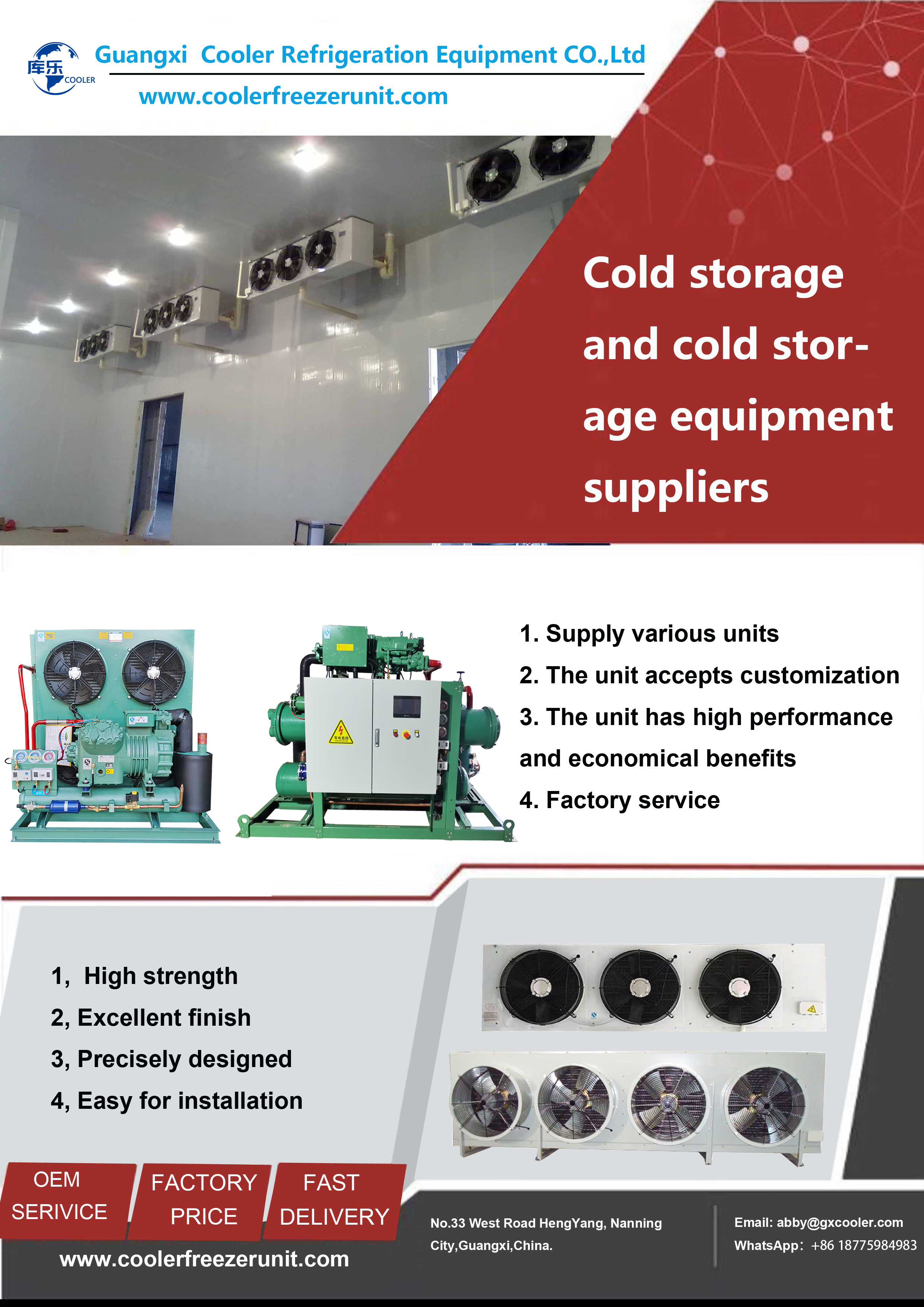Cold storage can be widely used in food factories, dairy factories, pharmaceutical factories, chemical factories, fruit and vegetable warehouses, egg warehouses, hotels, hotels, supermarkets, hospitals, blood stations, troops, laboratories, etc. It is mainly used for constant temperature storage of food, dairy products, meat, aquatic products, poultry, fruits and vegetables, cold drinks, flowers, green plants, tea, medicines, chemical raw materials, electronic instruments, etc.
The classification of cold storage:
1、The scale of cold storage capacity.
The division of cold storage capacity is not unified, and it is generally divided into large, medium and small. The refrigeration capacity of large-scale cold storage is above 10000t; the refrigeration capacity of medium-sized cold storage is 1000-10000t; the refrigeration capacity of small cold storage is below 1000t.
2、The design temperature of refrigeration
It can be divided into four categories: high temperature, medium temperature, low temperature and ultra-low temperature.
① The refrigeration design temperature of general high-temperature cold storage is -2 °C to +8 °C;
② The cold storage design temperature of the medium temperature cold storage is -10℃ to -23℃;
③Low temperature cold storage, the temperature is generally between -23°C and -30°C;
④Ultra-low temperature quick-freezing cold storage, the temperature is generally -30 ℃ to -80 ℃.
Small cold storage is generally divided into two types: indoor type and outdoor type
1. Ambient temperature and humidity outside the cold storage: the temperature is +35°C; the relative humidity is 80%.
2. The set temperature in the cold room: fresh-keeping cold room: +5~-5℃; refrigerated cold room: -5~-20℃; low temperature cold room: -25℃
3. The temperature of food entering the cold storage: L-level cold storage: +30 °C; D-level and J-level cold storage: +15 °C.
4. The effective stacking volume of the assembled cold storage is about 69% of the nominal volume, and it is multiplied by a correction factor of 0.8 when storing fruits and vegetables.
5. The daily purchase volume is 8-10% of the effective volume of the cold storage.
What should be paid attention to when designing a cold storage?
1、Cold storage heat:
The heat of Kuwen:
The heat flow of the storage structure is mainly due to the existence of the temperature difference between the inside and outside of the storage. . A certain temperature difference of the cold storage is basically determined, and the surface area is constant, so the selection of good thermal insulation materials can reduce the heat flow of the storage body.
2、Cargo Heat:
Although the main function of small cold storage is to refrigerate and store raw materials, semi-finished products or finished products that have been cooled, but in practical applications, there are often high-temperature goods placed in it for cooling. In addition, for refrigerated vegetables, fruits and other fresh fruits and vegetables due to their life Stop, respiration produces part of the heat is also part of the cargo heat flow. Therefore, the heat flow of a certain amount of goods should be considered in the load design of small cold storage, and the daily storage volume is generally calculated according to 10%-15% of the total capacity of the cold storage.
3、ventilation heat:
Fresh fruits and vegetables need to breathe and ventilate. A major feature of small refrigerators in use is that frequent opening of the door and the balancing window inevitably generate gas exchange. The hot air from the outside enters the storehouse and generates a certain amount of heat flow.
4、Evaporative fans and other heat:
Due to the forced convection of the fan, the temperature of the room can be quickly and evenly made, and the heat and kinetic energy of the motor are completely converted into heat. The heat flow of the motor is generally calculated according to its operating time, generally 24 hours a day. In addition, the water is heated by the anti-freezing heating wire, the heat generated by the electric defrosting and the heat generated by the anti-condensing heating wire, etc. The heat flow of people operating in a small cold storage can generally be ignored if it is not working for a long time.
The sum of the above heat flows is the total heat load of the cold storage, and the heat load is the direct basis for selecting the refrigeration compressor.
Compared with large-scale cold storage, the design requirements of small-scale cold storage are not high, and the matching of compressors is relatively simple. Therefore, the heat load of general small-scale cold storage does not require design calculation, and compressor matching can be carried out according to empirical estimation.
Under normal circumstances, the evaporative temperature of the refrigerator is -10 degrees Celsius, and the daily storage volume is 15% of the storage capacity, and the storage temperature is 20 degrees Celsius, and the inner volume of the refrigerator can be calculated as 120-150W per cubic meter; the freezer is calculated by evaporation. The temperature is -30 degrees Celsius, and the daily storage volume is 15% of the storage capacity. The storage temperature is 0 degrees Celsius, and the inner volume of the cold storage can be calculated at 110-150W per cubic meter. Among them, as the volume of the cold storage increases, the cooling capacity per cubic meter gradually decreases.
5、Notes
(1) Determine the size of the cold storage (length × width × height) according to the tonnage of the stored goods, the daily purchase and shipment volume and the size of the building. Determine the specifications and dimensions of the door. The installation environment of the cold storage in the opening direction of the door should be clean. , dry and ventilated.
(2) According to the stored items, choose and determine the temperature in the warehouse for fresh-keeping storage: +5--5℃, refrigerated and frozen: 0--18℃, low-temperature storage: -18--30℃).
(3) According to the characteristics of the building and the local water source, choose the cooling method of the refrigerator, generally air-cooled and water-cooled. (Users of the air-cooled chiller only need to select the placement location; users of the water-cooled chiller also need to configure the placement location of a pool or deep water well, circulating water pipes, pumps, and cooling towers).

Post time: Jun-01-2022






